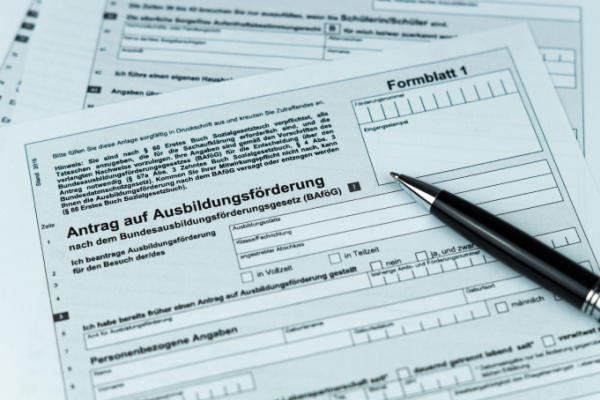Why apply to Australian universities to study abroad?
Australia is home to 7 of the world’s top 100 universities, making it a global hub for quality education especially for Indian students. Every year, more than 600,000 international students choose to study in Australia because of its top-tier education, multicultural environment, and great career opportunities. Australia is home to some of the most prestigious institutions like the University of Melbourne, Australian National University (ANU), and theUniversity of Sydney, consistently ranked among the top 50 universities worldwide. Here are some of the reasons why getting admission to Australian universities can be an advantage to Indians and international students.
- Top Universities: 7 Australian universities rank among the Top 100 QS World Rankings
- Post-Study Opportunities: The Subclass 485 Temporary Graduate Visa allows graduates to work and gain experience in Australia for up to 4 years.
- Affordable Living: Compared to the studying in the USA or Studying in the UK, Australia offers a better quality of life at a relatively affordable cost.
If you're wondering "How to apply for Australian universities" or "How can I study in Australia?", this guide provides a step-by-step process to help you secure admission in Australia successfully.
Step-by-Step Guide: How to Apply to Australian Universities
The first step to turning your dream into reality is understanding the application process. While it may seem daunting, with the right guidance and preparation, you can navigate the application process smoothly. This guide will walk you through the essential steps to apply to Australian universities.
Step 1: Research and Shortlist Universities
Before applying, take time to evaluate your options like which course you want to study and the location of your institution.
- Visit the official websites of Australian universities and explore courses that align with your career goals.
- Compare rankings on platforms like QS World University Rankings and Times Higher Education.
- Look into tuition fees, location, and campus facilities.
Step 2: Check Eligibility and Entry Requirements
Each university has its specific entry requirements. However here are the general requirement that aligns with most of the Australian universities.
For Undergraduate Programs:
- Completion of Class 12
- IELTS: 6.0–6.5 Overall
- TOEFL iBT: Minimum 79
- PTE Academic: Minimum score 58.
For Postgraduate Programs:
- Bachelor’s degree in a relevant field with a minimum GPA of 3.0/4.0.
- Some programs may require work experience (e.g., MBA programs).
Step 3: Prepare the Required Documents
Here’s a checklist of the documents you need to apply:
- Academic Transcripts: High school certificates or Bachelor’s transcripts.
- English Proficiency Test Scores: IELTS/TOEFL/PTE.
- Statement of Purpose (SOP): An essay outlining your academic goals, career aspirations, and reasons for choosing Australia.
- Letters of Recommendation (LORs): Typically 2-3 letters from teachers or employers.
- Updated CV/Resume: Especially for postgraduate programs.
- Valid Passport: Ensure it is valid for at least 6 months beyond your course duration.
Step 4: Application Process for Admission
Applications can be submitted through:
- University Portals: Apply directly via the university’s website.
- Study abroad consultants: Authorized overseas education consultants can have 500+ consultants catering all over India from applying to getting admission to Australian universities.
Steps to apply online:
- Create an account on the university portal.
- Fill out the application form with personal and academic details.
- Upload the required documents.
- Pay the application fee (AUD 50–150, depending on the university).
Step 5: Admission Process and Receiving Offers
After submission, universities will assess your application and issue one of the following:
- Conditional Offer: Admission is granted pending certain conditions (e.g., submission of missing documents).
- Unconditional Offer: Full admission is granted.
To confirm enrollment:
- Accept the offer letter.
- Pay the initial tuition deposit.
- Receive an Electronic Confirmation of Enrolment (eCoE), required for the student visa.
Step 6: Apply for a Student Visa (Subclass 500)
Once you have the eCoE, apply for the Subclass 500 Student Visa:
Requirements for Student Visa
- Proof of eCoE.
- Genuine Temporary Entrant (GTE) statement.
- Financial proof: Minimum AUD 21,041/year for living expenses.
- Overseas Student Health Cover (OSHC).
- Health and character certifications.
Processing Time: Typically 1-2 months.
Step 7: Plan Your Arrival in Australia
Before leaving, finalize the following:
- Accommodation: Choose between on-campus dorms or private rentals.
- Flights: Book your tickets early to save costs.
- Orientation: Attend university orientation programs to familiarize yourself with the campus, services, and local culture.
Study in Australia Requirements
| Requirement | Details |
| Academic Qualifications | UG: Class 12; PG: Bachelor's |
| English Proficiency | IELTS, TOEFL, PTE required |
| Visa Subclass 500 | eCoE, OSHC, financial proof |
| Financial Requirements | AUD 21,041/year |
Admission Intake Time in Australian Universities
Here are the essential aspects of learning about the intake time in Australian Universities.
- Semester 1/T1-Late February or early March to late May or early June
- Semester 2/T2-Late July or early August through to November
- Semester 3/T3-Late October or early November through to February.
Study Credit and Admission Eligibility in Australia
One should know about Australian university admission requirements for international students properly. Like credit systems in other parts of the world, the academic credits in Australia track a student’s academic progress.
Moreover, credits also play a crucial role in determining tuition fees. The individual faculties or departments have different rules associated with independent study and transfer credit. So, international students should be aware of the number of study credits that can be transferred.
Like in any other university in the world, for each course, students earn a particular credit value. The credits denote the total number of hours aspirants are expected to study a subject per week. In most Australian universities, each subject has a credit value ranging from 6 to 8. For Bachelor’s, students require the completion of 144 credit points. For the Master’s, the students need 96 credits.
To pursue a Bachelor’s degree, students can appear for the International Baccalaureate (IB) exam. The IB is widely recognized in Australia. For a successful entry into a Master’s course, students need to furnish a graduation certificate.
Deadline for University Application in Australia
By August to September, aspirants should start applying to the university. Usually, by October to December, the application window closes. In December, students should search for financial aid or scholarships. From February to March, the session in Australian universities commences. It is essential to adhere to the Australian university admission requirements for international students to avoid rejections.








.jpg)



